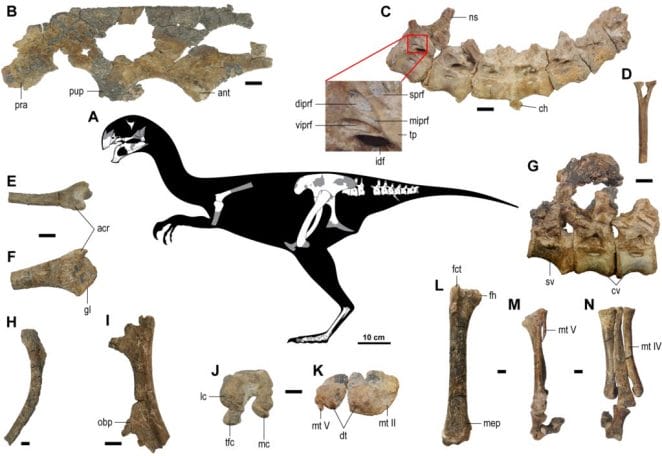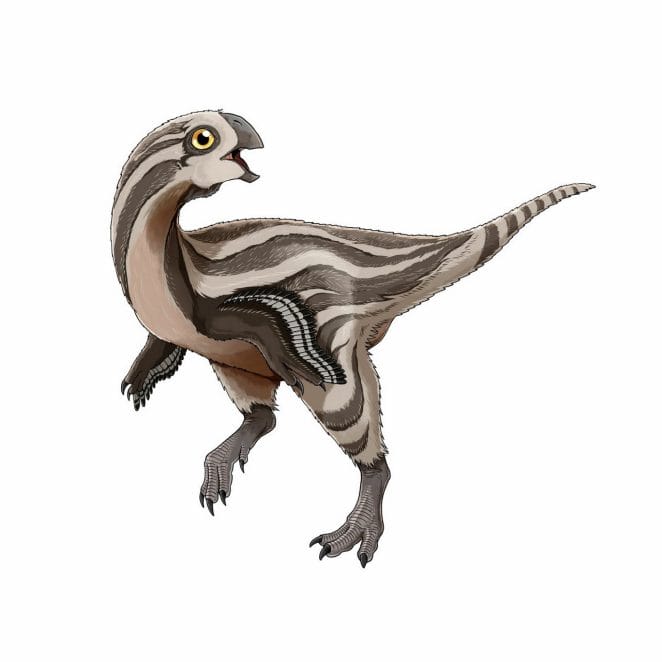The Gobiraptor fossil was discovered in the Nemegt Formation and comprises of fragmentary skull and postcranial parts. The discovery of new oviraptorosaurs from the Cretaceous period in Asia and North America revealed their vast diversity. Oviraptorids were among the most diversified theropod dinosaur species, notably at the family level, in Late Cretaceous Mongolia and China.
On the similarities between oviraptors and modern birds, such distinctive features as tooth loss, extreme pneumatization, skull adornment, an unusual sliding jaw joint, the reduction of the caudal vertebrae forming a pygostyle, feathers with modern aspects, and the same stereotypical attitude when breeding are shared.

Find out more facts about Gobiraptor.
1: Gobiraptor quick facts:
Name: Gobiraptor (Greek for “Gobi Thief”); pronounced Go-be-rap-tor
When it lived: Early Cretaceous, 72 to 70 million years ago
Type of dinosaur: Small Theropod
Location: Mongolia
Habitat: Mesic habitat.
Length/Weight: Unknown
Diet: Omnivorous
Distinguishing Characteristics: Having unusually thickened jaws in comparison to other oviraptorosaurs.
Named by: Lee et al.(2019)
2: How do you pronounce ‘Gobiraptor’?
The name Gobiraptor should be pronounced “Go-be-rap-tor.”
3: What does the name Gobiraptor mean?
The generic name Gobiraptor is derived from the Gobi Desert, where the holotype specimen was discovered, and the Latin word for thief, ‘raptor’. The specific name ‘minutus’ is derived from the Latin word for small and relates to the diminutive size of the holotype specimen.
4: What Did Gobiraptor Look Like?

Gobiraptor was a bird-like dinosaur with feathers. This dinosaur’s exact body length and height are currently unknown. Since most other oviraptorid dinosaurs were small, it is reasonable to believe that Gobiraptors was also small. A distinguishing feature of Gobiraptor is their enlarged jaws. It is unknown whether they were slimy or possessed formidable teeth.
Sources:Wikipedia





GIPHY App Key not set. Please check settings